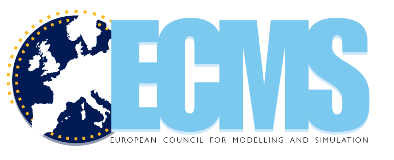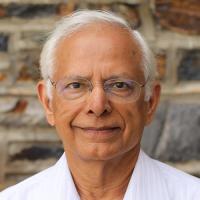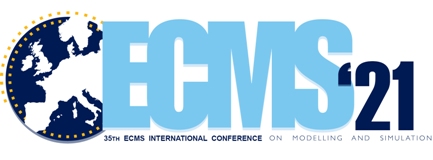
ISSN 2522-2422 (ONLINE) - ISSN 2522-2414 (Print) - ISSN 2522-2430 (CD-ROM)
ECMS 2021
May 31st - June 2nd, 2021
Web-organised
Conference
with printed and published proceedings
Keynote Speakers and Tutorial
We are happy to announce our Keynote Speakers
NTNU: Norwegian University of Science and Technology
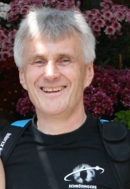 Webjørn
Rekdalsbakken
Webjørn
Rekdalsbakken
together with
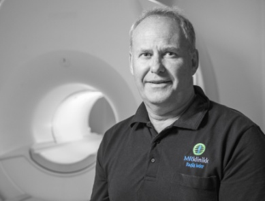
additional parts of the presentation will be given by
Øystein Bjelland,
PhD candidate, NTNU
and
Tor Ola Solheim, master student, NTNU
Digital Twins for Computer Haptic-Assisted
Orthopaedic Surgery
In medical
imaging, digitalization has become the key aspect for future development.
The realization of 3D organ models based on MRI, CT and ultrasound imaging
is a growing research field. With the increasing amount of data from such
medical examinations, and the improvement of the quality of the data, this
creates unique possibilities to build realistic organ models. These models
have the potential to very closely imitate both the anatomy and physiology
of the human body. Therefore, such models could be used in the teaching of
these disciplines, and not least in the planning and training of surgical
interventions. In this project the goal is to establish digital twins of
human joints, focusing on the knee and shoulder. The digitalization of
medical imaging, and the digital acquisition of relevant medical data from
many sources have opened up for the development of innovative and efficient
tools constituting a new playground for surgeons and physicians. The access
to real human physiological variables, combined with the increasingly
advanced tools for designing and visualizing in 3D, opens the possibility of
generating realistic digital 4D models of human joints. These 4D models will
be designed as digital twins of its biological counterparts, including the
functional positions, operational positions and dynamic variation of the 3D
models. These models will be used in intelligent investigations of the
joints, and in surgical interventions on the joints.
-------------------------------------------
We are happy to announce a tutorial given by Kishor S. Trivedi
Duke University, North Carolina, USA
Kishor Trivedi is the Fitzgerald Hudson Professor in
the Department of Electrical and Computer Engineering at Duke University,
Durham, NC. He has a 1968 B.Tech. (EE) from IIT Mumbai and MS’72/PhD’74
(CS) from the University of Illinois at Urbana-Champaign. He has been on
the Duke faculty since 1975. He is the author of a well-known text
entitled, Probability and Statistics with Reliability, Queuing and
Computer Science Applications, originally published by Prentice-Hall; a
thoroughly revised second edition of this book has been published by John
Wiley. The book is recently translated into Chinese. He has also published
several other books: Performance and Reliability Analysis of Computer
Systems, published by Kluwer Academic Publishers and Queueing Networks and
Markov Chains, John Wiley. His latest book, Reliability and Availability
Engineering is published by Cambridge University Press in 2017. He is a
Life Fellow of the Institute of Electrical and Electronics Engineers and a
Golden Core Member of IEEE Computer Society. He has published over 600
articles, has supervised 48 Ph.D. dissertations and his h-index is 107. He
is the recipient of IEEE Computer Society’s Technical Achievement Award
for his research on Software Aging and Rejuvenation and IEEE Reliability
Society’s Life Time Achievement Award. His. He has worked closely with
industry in carrying our reliability/availability analysis, providing
short courses on reliability, availability, and in the development and
dissemination of software packages such as HARP, SHARPE, SREPT and SPNP.
Reliability and availability of hardware-software systems
High reliability and availability are requirements for
most technical systems including computer and communication systems.
Reliability and availability assurance methods based on probabilistic
models is the topic addressed in this talk. Non-state-space solution
methods are often used to solve models based on reliability block
diagrams, fault trees and reliability graphs. Relatively efficient
algorithms are known to handle systems with hundreds of components and
have been implemented in many software packages. Nevertheless, many
practical problems cannot be handled by such algorithms. Bounding
algorithms are then used in such cases as was done for a major subsystem
of Boeing 787. Non-state-space methods derive their efficiency from the
independence assumption that is often violated in practice. State space
methods based on Markov chains, stochastic Petri nets, semi-Markov and
Markov regenerative processes can be used to model various kinds of
dependencies among system components. Linux Operating System and WebSphere
Application server are used as examples of Markov models. IBM research
cloud is used as an example of stochastic Petri net model. However, the
state space explosion of such models severely restricts the size of the
problem that can be solved. Hierarchical and fixed-point iterative methods
provide a scalable alternative that combines the strengths of state space
and non-state-space methods and have been extensively used to solve
real-life problems. Real-world examples of such multi-level models from
IBM, Cisco and Sun Microsystems will be discussed. Hardware systems as
well as software systems and their combinations will be addressed via
these examples. Novel approaches to software fault tolerance will be
discussed.
Page
created by M.-M. Seidel
© Copyright ECMS - All Rights Reserved
